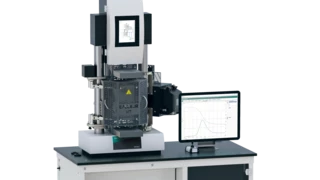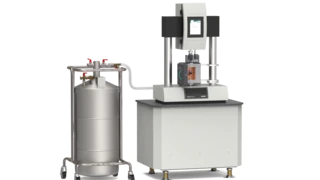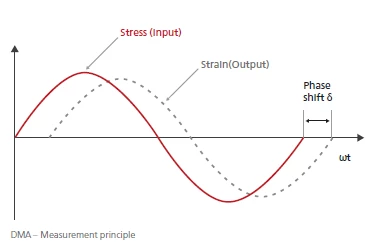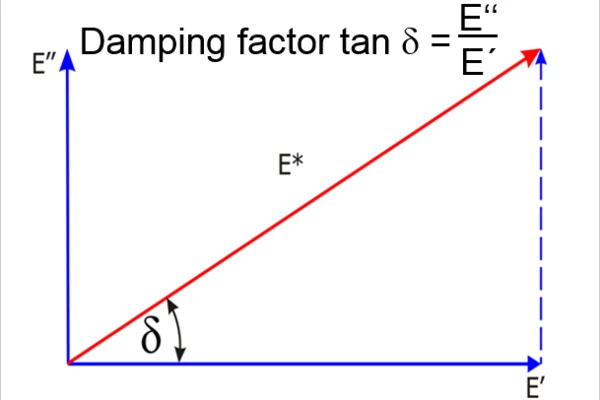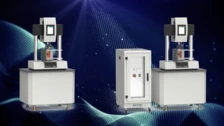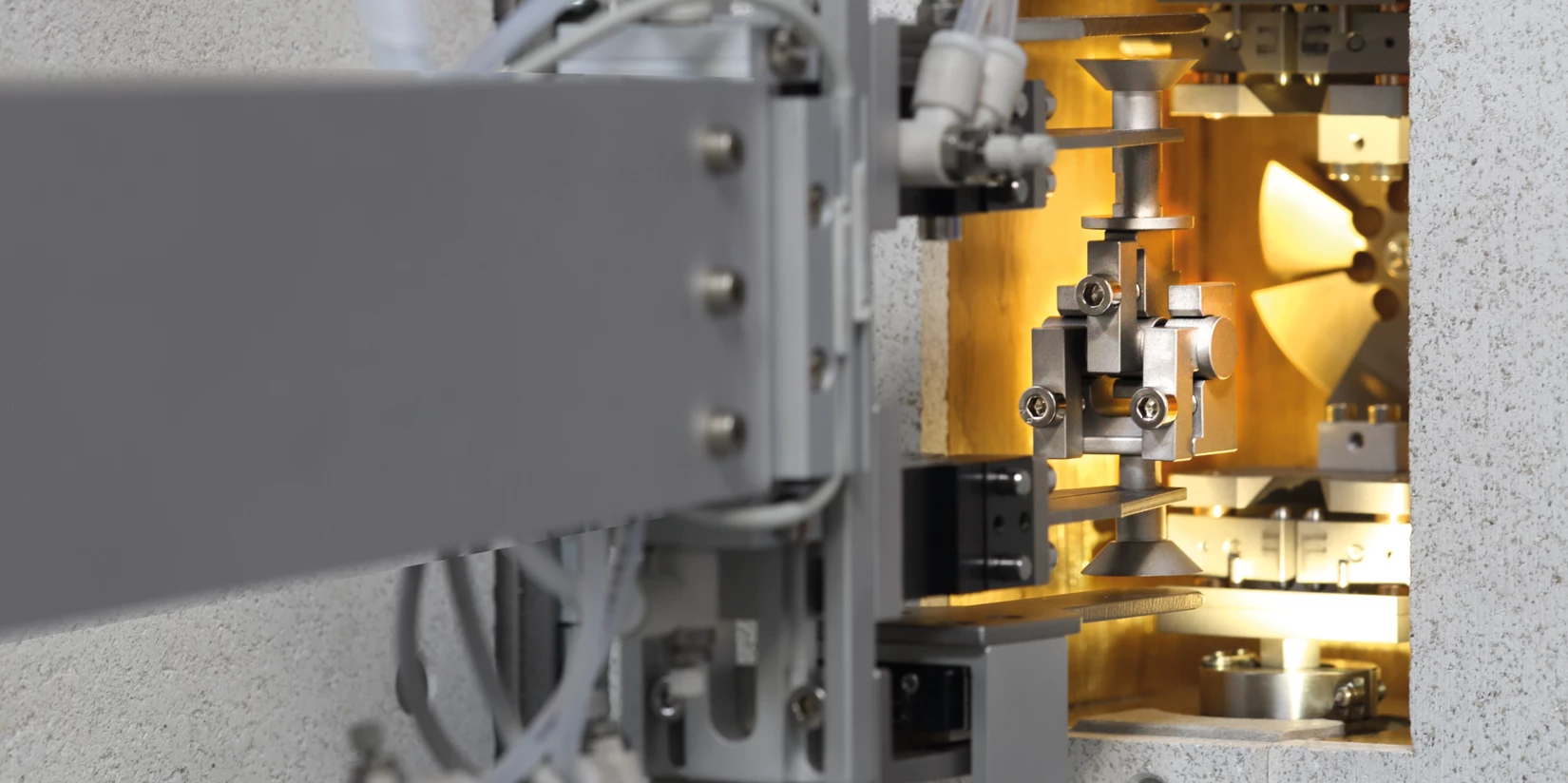
DMA
Dynamic Mechanical Analysis
Dynamic Mechanical Analysis (DMA) records a material’s temperature-dependent visco-elastic properties and determines its modulus of elasticity and damping values by applying an oscillating force to the sample.
| Instrument Type | DMA 303 Eplexor® | DMA Gabo Eplexor® | DMA Gabo Eplexor® HT | GABOMETER® |
|---|---|---|---|---|
| High-Force DMA System | - | √ | √ | √ |
| Static Force | √ | √ | √ | √ |
| Dynamic Force | √ | √ | √ | √ |
Dynamic Mechanical Analysis (DMA) is an indispensable tool for determining the visco-elastic properties of materials, mainly polymers.
Elastomers, for example, are very rigid below the Glass Transition TemperatureThe glass transition is one of the most important properties of amorphous and semi-crystalline materials, e.g., inorganic glasses, amorphous metals, polymers, pharmaceuticals and food ingredients, etc., and describes the temperature region where the mechanical properties of the materials change from hard and brittle to more soft, deformable or rubbery.glass transition temperature (Tg) and have a high modulus of elasticity. Above Tg, they are flexible and show damping performance. DMA measures the visco-elastic properties during a controlled temperature and/or frequency program.
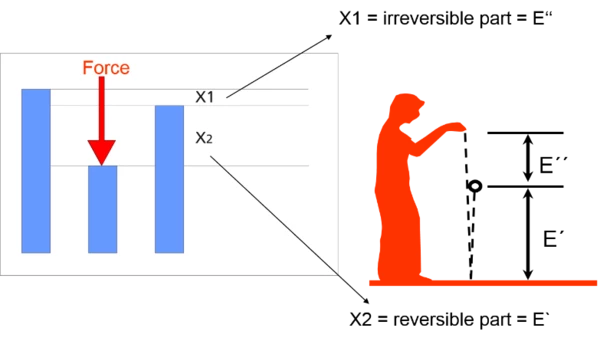
How Do Visco-Elastic Polymers Behave?
The dynamic-mechanical properties of visco-elastic polymer materials are dependent on the operating temperature, the type of oscillating force applied to the sample in a defined deformation mode and the frequency or time of the applied oscillating force. The determined modulus of elasticity of a polymer material is not a constant number, but a function of the temperature, time and frequency of the dynamic force applied to a specimen with a defined geometry.
Method
During the test, a sinusoidal force (StressStress is defined as a level of force applied on a sample with a well-defined cross section. (Stress = force/area). Samples having a circular or rectangular cross section can be compressed or stretched. Elastic materials like rubber can be stretched up to 5 to 10 times their original length.stress σ) is applied to the sample (input). This results in a sinusoidal deformation (StrainStrain describes a deformation of a material, which is loaded mechanically by an external force or stress. Rubber compounds show creep properties, if a static load is applied.strain ε; output).
Certain materials, such as polymers, exhibit viscoelastic behavior; i.e., they have both elastic properties (such as an ideal spring) and viscous ones (such as an ideal dashpot). This viscoelastic behavior causes shifting of the corresponding StressStress is defined as a level of force applied on a sample with a well-defined cross section. (Stress = force/area). Samples having a circular or rectangular cross section can be compressed or stretched. Elastic materials like rubber can be stretched up to 5 to 10 times their original length.stress and StrainStrain describes a deformation of a material, which is loaded mechanically by an external force or stress. Rubber compounds show creep properties, if a static load is applied.strain curves. The deviation is referred to as the phase shift δ. The response signal (StrainStrain describes a deformation of a material, which is loaded mechanically by an external force or stress. Rubber compounds show creep properties, if a static load is applied.strain, ε) is split into an “in-phase” and an “out-of-phase” part by means of Fourier Transformation.
The method is described in, for example, ISO 6721-1 to 12, ASTM D4065-90, ASTM D4092-90, ASTM D4473-95, ASTM D5418-99, ASTM D5023-99, ASTM D5024-95a, ASTM D5026-95a, ASTM D5279-99, ASTM E1640-94 and ASTM E1867-97.
Which Materials Can Be Tested?
From viscous liquids, rubber to fiber-reinforced plastics, from food and pharmaceuticals to metals and ceramics – all such materials can be analyzed with DMA by using different sample holders, accessories and measurement modes.
Application Literature

MEASUREMENT WANTED?
Our NETZSCH applications laboratory is providing contract testing services for a wide range of industries and research centers. It is equipped with state-of-the-art testing instruments allowing for a variety of thermal analysis measurements to be carried out.
Consult with the experts in our applications labs to choose the best-suited measuring method for your specific needs.


